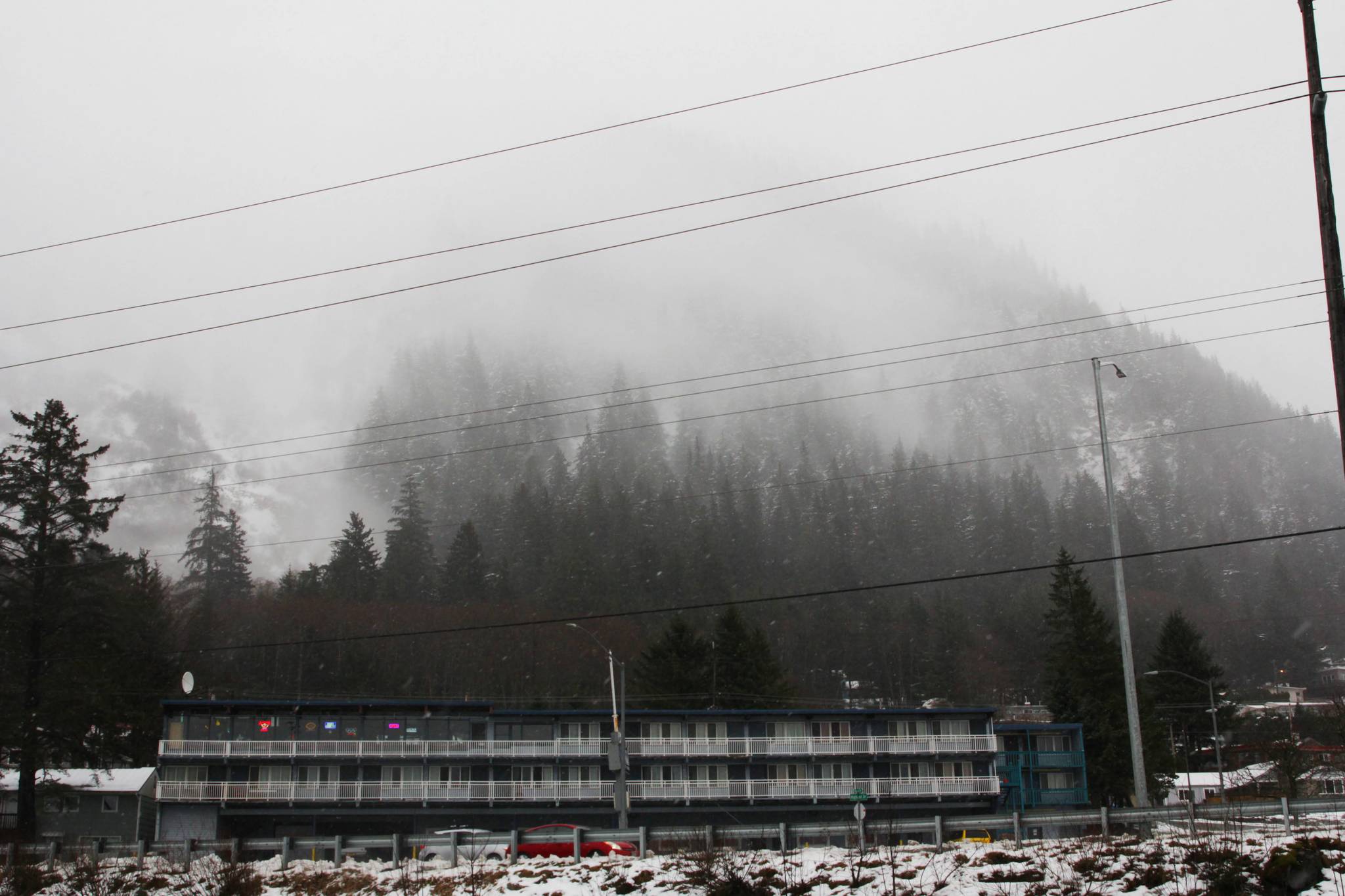While improved weather has reduced the avalanche risk across the region, deepening snow means the risk is still clear and present, according to the city’s avalanche specialist.
“The danger went from extreme to high,” said City and Borough of Juneau emergency program manager Tom Mattice. “That doesn’t mean the danger went away, just that it’s less likely.”
The high danger level means the likelihood of avalanches is very likely, and the size is large or very large, according to the city. Low precipitation, cooling temperatures and low wind allow the snowpack to settle and reduce risk of an avalanche, Mattice said.
The avalanche forecast, carried out daily and updated at https://juneau.org/emergency/current-advisory, is folks’ best shot for keeping a weather eye out for the looming danger above the city, Mattice said. But it’s not just downtown that needs concern itself, Mattice said.
“The danger all over the region, including the backcountry, is going to be considerable for some time,” Mattice said. “The more conservative you are, the less danger you’ll be in.”
Concerns over imminent risk to the Behrends Avenue avalanche chute prompted the city to recommend evacuations for residents in the strike zone over the weekend, standing up an emergency shelter at Centennial Hall in partnership with the Red Cross of Alaska. Mattice himself walked the high-risk area Saturday morning, letting residents know that evacuation was recommended. Many went to stay with friends, Mattice said.
“The Swiss model shows, if it breaks 6 feet deep across Mount Juneau, it’s going to hit Egan Drive at 14 feet deep, going 57 mph, across a quarter mile,” Mattice said in a previous interview about the scale of the possible avalanche.
The shelter only had about two guests, Mattice said, but it had much higher capacity if the situation required it. Shifts of volunteers set up pod shelters, and were ready for dozens of guests if the situation required it. Deepening snow could increase the possible damage done by a potential avalanche.
“The problem’s not going away,” Mattice said. “It’s just getting deeper.”
The avalanche risk, while decreasing, may last well into spring, and the city will keep monitoring it until the snowpack melts off and the danger abates, Mattice said.
‘All the way till the very end, we’ll keep an eye on it,” Mattice said. “I’ve done avalanche forecasts as late as May 10.”
• Contact reporter Michael S. Lockett at (757) 621-1197 or mlockett@juneauempire.com.

